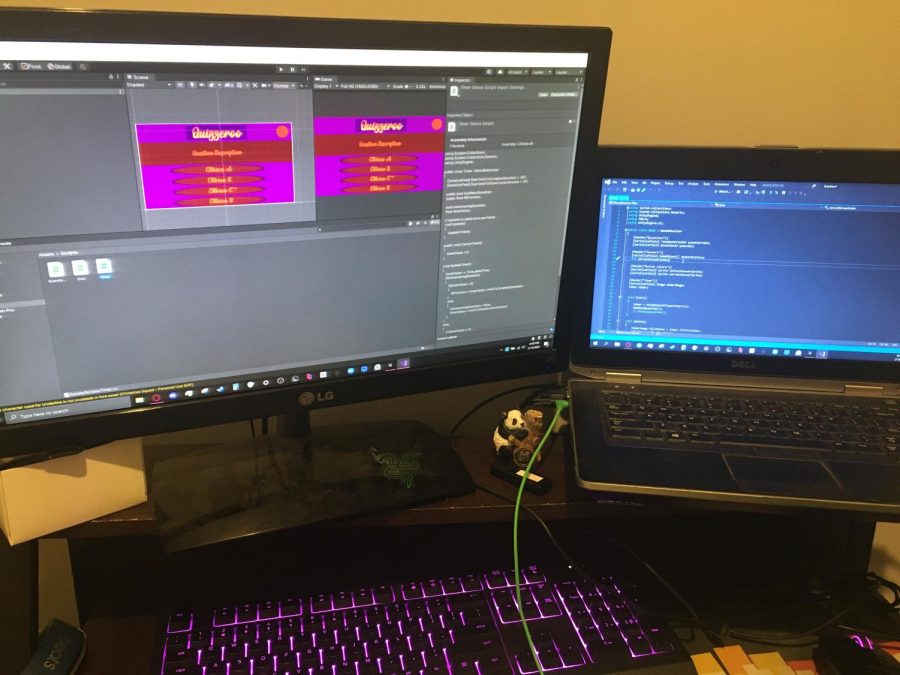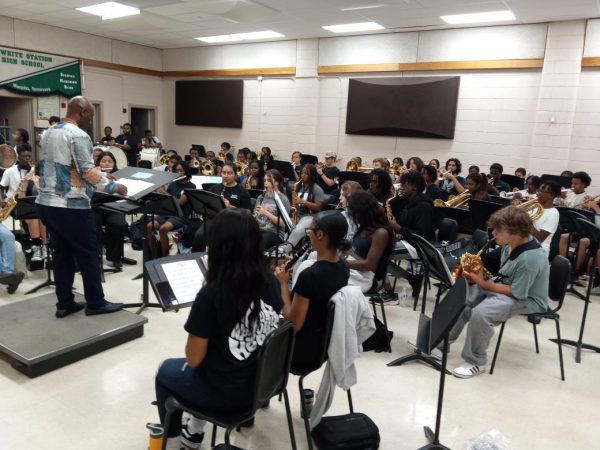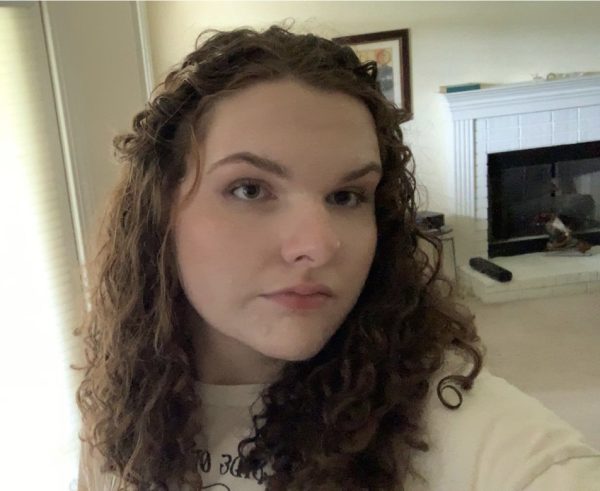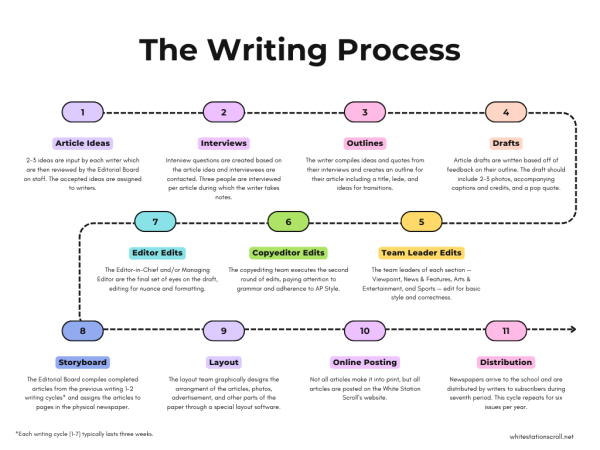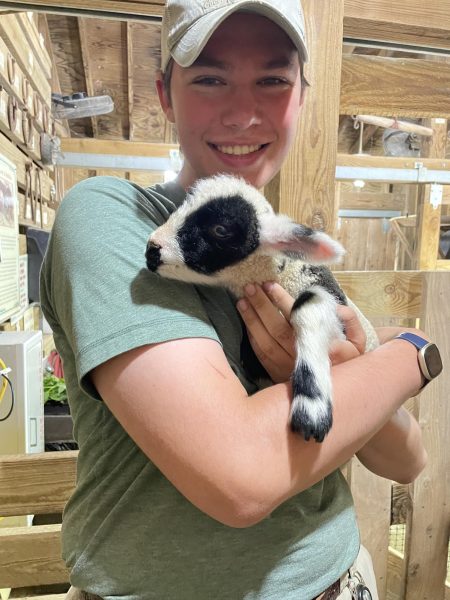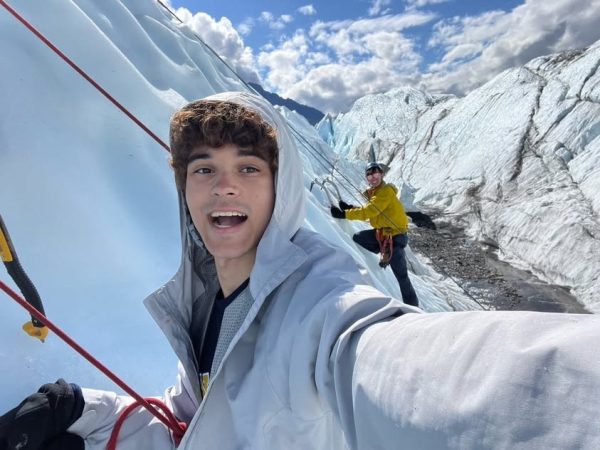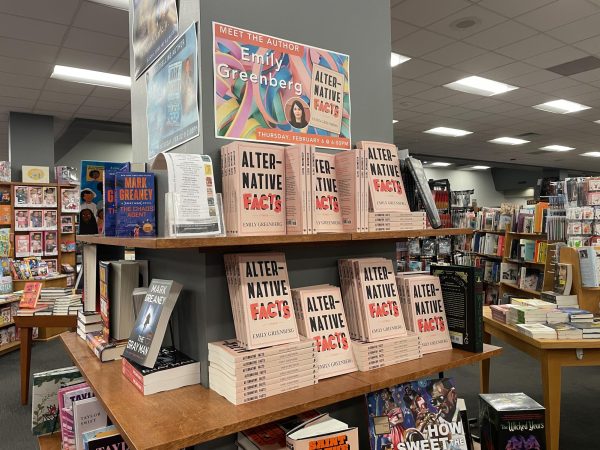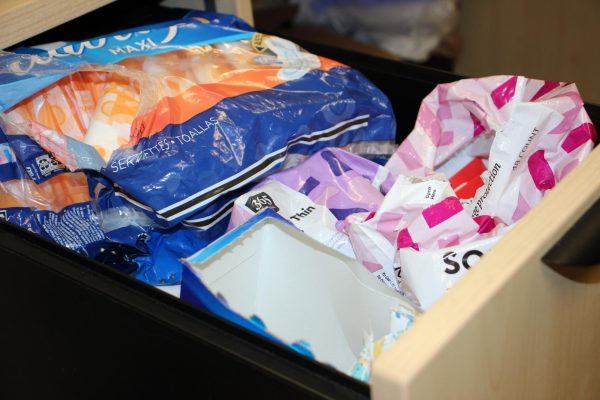Computer painting: the art of coding
This example of code, written by Diego Gil (11), is in C# language, which is one of many computer languages. The code was created for the controller of a side-scroller video game.
When someone is wanting to be creative, they may reach for a set of watercolors, a piano or even a sewing machine for a way to express themselves. But for Shivam Aarya (11) and Diego Gil (11), they head to the computer to work on their craft of coding – or computer programming.
Aarya started coding in elementary school through Khan Academy’s Hour of Code, where he created images through coding. Later, he advanced to Python, a program where he was able to create his own projects for himself and others.
“[Khan Academy’s Hour of Code] was just a fun way to interact with the computer, like you could write down the instructions and you know it’s all going to run the same,” Aarya said. “All you need to do is know how to program something and once you have that knowledge you can make pretty much anything, which was just so exciting for me.”
After math teacher Yanli Cui mentioned that computers could solve Riemann sums, a method to approximate integrals, Aarya decided to create his own program. The program, which took around a week to finish, was able to show a graph of the Riemann sum and the steps to solve for any function typed into the user interface.
“[Creating the program] was just so much fun,” Aarya said. “I mean, I stayed up until like 5 a.m. doing it on Friday night and then I spent all of Saturday on it.”
Aarya, also a member of the robotics team, created an app for Maridee Cornell, the sponsor of the robotics team, which logged the hours of attendance for each club member – something that was formerly done by hand. If a member reaches 100 hours, they are eligible to go with the team to competition.
“Instead of making [the sign-in sheet] through Google Forms or something like that, I decided to have some fun with it, and I made my own like app for it,” Aarya said. “Where if you open it up, it’ll like give you a list of all the names of the people that are in the club. You can scroll through it, select your name … and then you can sign them in and then you can sign yourself out too. At the end of the day, when you exit the program, it’ll save it all to like its own database sheet and it will automatically calculate everyone’s hours and it’ll upload that to a cloud server.”
Due to the lack of computer science based afterschool activities, Aarya, who is now president, co-founded the school’s coding club. The club has three teams: one for machine learning programming, one for learning web design and one for learning the basics of programming – taught by Aarya himself.
“Getting to teach people, it’s a lot of fun, especially once you see them like take something you gave them and they’ve built something new with it — that gets really exciting,” Aarya said.
For Gil, although he is not a part of the school’s coding club, he codes outside of school because of his interest in video game design. He began coding when he was younger through Code.org, but revisited coding over a year ago.
“I program video games, but mainly I am still in the learning process,” Gil said. “… I watch videos on how to improve my coding and not anything else to be honest.”
Although Aarya and Gil work on different kinds of projects, the two both face issues with debugging, which is identifying and resolving computer programming errors.
“[The] most difficult thing about coding is trying to express my thoughts into a coding language since it can become quite bothersome trying to explain to a computer what to do,” Gil said.
Despite any difficulties faced, both students are taking the steps to practice their craft in the attempts of having careers in computer science. For Aarya, he is considering the newer field of machine learning and also has interests in artificial intelligence while Gil wants to work towards a career based in video game design.
“I am interested in a career of programming, such as software engineering to start my journey of creating apps, then [I will] grow into more video game dedicated projects,” Gil said. “And throughout high school, I intend to try and take classes that will best benefit me to reach my end goal in programming such as Computer Science A.”
Although Aarya and Gil both began coding when they were younger, it is never too late to pick up the craft, which for both students is rewarding in seeing the fruition of their projects.
“Computer science itself is a very fun field, and I would encourage anyone that is looking into it to definitely give it a shot and see if they like it,” Aarya said.
Your donation will support the student journalists of White Station High School. Your contribution will allow us to purchase equipment and cover our annual website hosting costs.




































